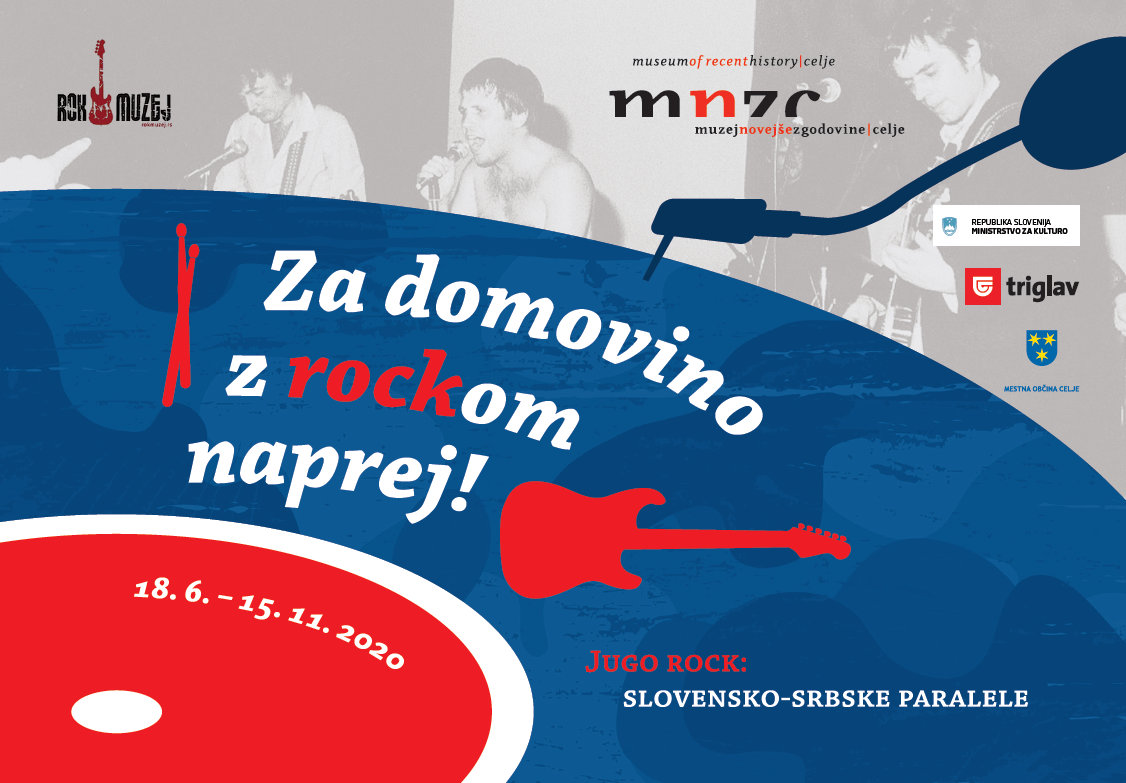A new occasional exhibition For the Homeland Rock on! was on display from mid-June till mid-November 2020, which was created in collaboration with the Rock Museum from Serbia.
Rock is not only a musical genre, but is also a cultural and popular phenomenon that changed the way of composing, performing and listening to music in the 70 years of its existence. With its mass influence, it pushed the boundaries, freed the youth from cultural and social ties, and made sure that even politicians also became interested in it. Definitely enough reasons for an exhibition on the development and impact of rock music on Slovenian society.
However, since the roots of rock in Slovenia are tied to the former common state, we invited to participate on the project the Rock Museum from Serbia, which keeps an important opus of documentary material and objects of Serbian musicians. Rock musicians of former Yugoslavia directly influenced each other, so it is almost impossible to explore rock music in Slovenia limited to just that one place. The former state was also an intercultural and interlinguistic crossroads, which intentionally or unintentionally influenced musical creativity. Rock music has had and still has an influence on other subcultures, which, depending on the development of rock, have shaped their attitude and reputation in society. Rock, as a musical subgenre, has therefore been an important part of human heritage since the mid-20th century and is still today one of the most influential expressions of human creativity, socializing, entertainment and rebellion. The exhibition entitled For the Homeland Rock on! draws parallels between the Slovenian and Serbian rock scene and presents the main actors of both. At the same time, it also points to important moments when rock music broke down political, national and cultural boundaries.
The exhibition features instruments, concert clothing, records, cassettes and other small personal items of musicians from the period 1960-1991. The material is divided into four “stages”, namely the small stage, the large stage, the political stage and the backstage. The first three are intended for Slovenian and Serbian rock music, and the last one represents the Celje rock scene. There are two short films on display, the first about the rock times of Neca Falk and the second in which Zoran Predin, Vlado Kreslin, Peter Lovšin, Gregor Tomc, Tulio Furlanič, Anja Rupel and Aleš Klinar talk about the influence and (a)politics of Slovenian rock music.
The exhibition was accompanied by an extensive exhibition catalogue with texts by various authors from the field of popular music research.
For the Homeland Rock on!
